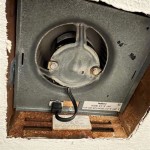Water Marks on Bathroom Walls
Water marks on bathroom walls are a common problem in many households. These unsightly blemishes detract from the overall aesthetic of the bathroom and can indicate underlying issues related to moisture and ventilation. Understanding the causes, prevention, and removal of these water marks is crucial for maintaining a clean and healthy bathroom environment.
Water marks appear as discolored patches or streaks on painted walls, tiles, or grout. They are caused by the evaporation of water droplets that contain dissolved minerals. As the water evaporates, these minerals are left behind, forming a visible residue. The color and intensity of the water marks depend on the mineral content of the water and the type of surface they are deposited on.
Several factors contribute to the formation of water marks on bathroom walls. High humidity levels, inadequate ventilation, and leaking fixtures are among the most common culprits. Steam generated from showers and baths increases the moisture content in the air. Without proper ventilation, this moisture condenses on cooler surfaces like walls, leaving behind water droplets that eventually evaporate and form water marks.
Leaking pipes and fixtures are another significant source of water marks. Even small leaks can release enough water over time to cause noticeable staining. Dripping faucets, leaky showerheads, and concealed pipe leaks within walls can all contribute to this problem. Identifying and repairing these leaks is essential to prevent further damage and the formation of more water marks.
Splashing water from sinks, showers, and baths can also lead to water marks, particularly on areas adjacent to these fixtures. While splashing is unavoidable to some extent, minimizing it can help reduce the occurrence of water marks. Using shower curtains or doors effectively and being mindful of splashing can make a difference.
Preventing water marks involves addressing the underlying causes of moisture buildup. Improving ventilation is a crucial step. Ensuring the bathroom has a properly functioning exhaust fan and using it during and after showers and baths can significantly reduce humidity levels. Opening a window, if available, can further enhance ventilation.
Promptly addressing leaks is another critical preventative measure. Regularly inspecting pipes, faucets, and showerheads for leaks and repairing them immediately can prevent water damage and the formation of water marks. If concealed leaks are suspected, consulting a plumber is recommended.
Wiping down walls after showering or bathing can also help prevent water marks. Using a dry towel to remove excess water from walls and other surfaces can minimize the amount of water that evaporates and leaves behind mineral deposits. This simple practice can significantly reduce the appearance of water marks over time.
Treating existing water marks requires different approaches depending on the severity and the type of surface affected. For light water marks on painted walls, a solution of mild dish soap and warm water can be effective. Gently scrubbing the affected area with a soft cloth or sponge can often remove the marks. For more stubborn stains, a paste of baking soda and water can be applied and left to sit for a few minutes before scrubbing and rinsing.
Water marks on tiles and grout can be more challenging to remove. Commercial tile and grout cleaners are often necessary for these surfaces. Following the manufacturer's instructions carefully is essential to avoid damaging the tiles or grout. For particularly stubborn stains, a mixture of vinegar and water can be effective, but it's crucial to test this solution in an inconspicuous area first to ensure it doesn't damage the surface.
In some cases, severe water marks may indicate more significant underlying problems such as water damage within the walls. If water marks are accompanied by other signs like peeling paint, musty odors, or soft spots in the wall, it's essential to consult a professional to assess the situation and determine the appropriate course of action.
Regular cleaning and maintenance are essential for preventing and managing water marks. Establishing a routine of wiping down walls, inspecting fixtures for leaks, and ensuring proper ventilation can significantly reduce the occurrence of these unsightly blemishes and maintain a clean and healthy bathroom environment.
Choosing appropriate paint finishes can also contribute to preventing water marks. Opting for paints with higher sheen levels, such as satin or semi-gloss, can make the surface more resistant to water damage and easier to clean. These finishes are less porous than flat or matte paints, making it harder for water to penetrate and leave behind marks.
Installing a water softener can also be beneficial in areas with hard water. Hard water contains high levels of minerals, which contribute to the formation of prominent water marks. A water softener reduces the mineral content of the water, minimizing the residue left behind after evaporation. This can significantly reduce the appearance of water marks on bathroom surfaces.

How Can I Prevent Water Trail Stains On Bathroom Drywall Home Improvement Stack Exchange

How To Get Water Stains Off Bathroom Walls Igloo Surfaces

Why Is There Water Stain On Wall Signs Of Leakage

Sticky Humidity On Bathroom Walls Hometalk

How To Remove Water Stains On Walls Ceilings Priority One Coatings

File Bathroom Wall Condensation Jpg Wikimedia Commons

Water Stains Runnig Down Bathroom Wall Of Hartford House Hotel Mooi River Tripadvisor

Yellow Drips On Bathroom Walls Causes Cleaning Solutions

Easy Ways To Prevent Water Stains On Bathroom Walls 7 Steps

How To Remove Water Stains On Walls Ceilings Priority One Coatings







